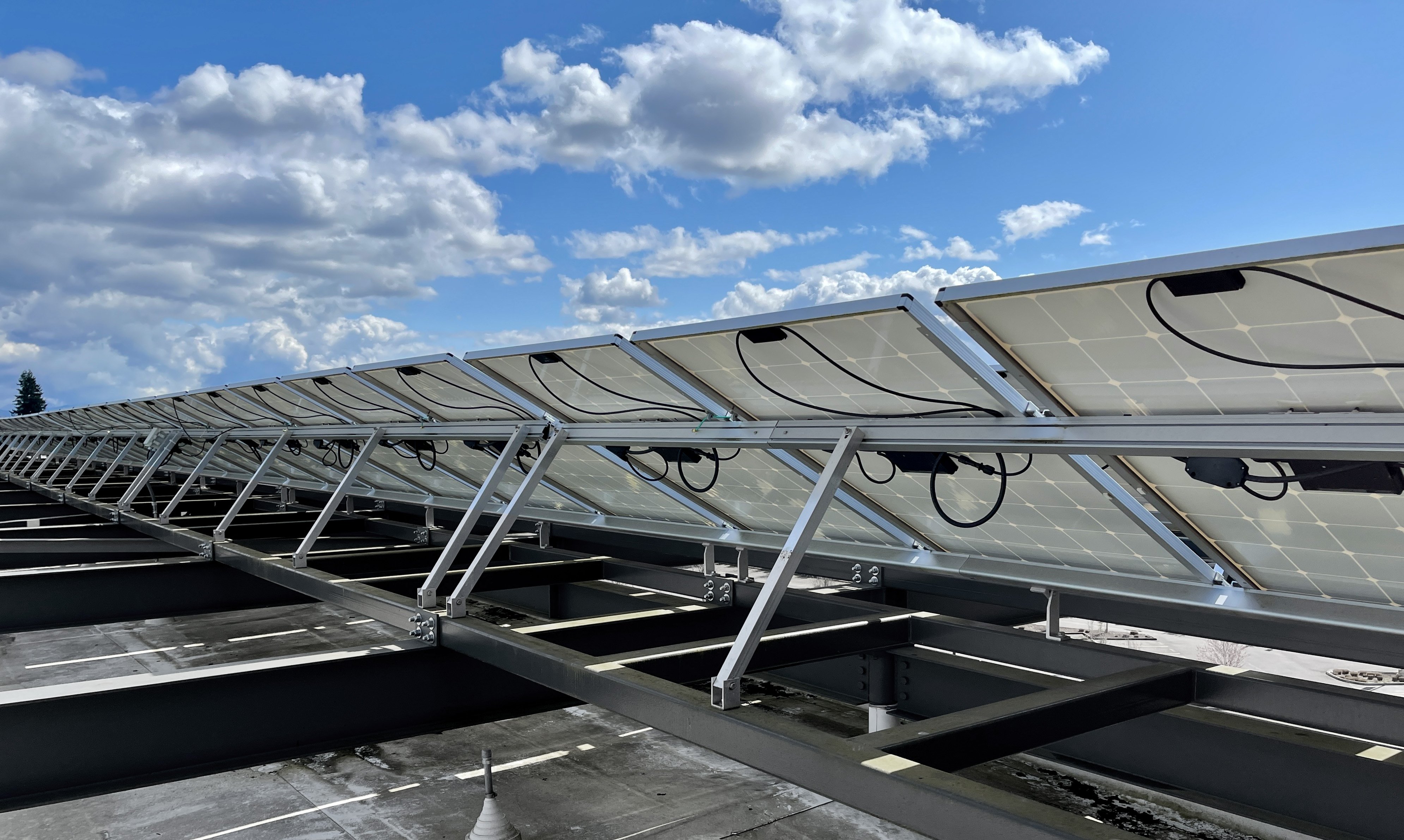Solar power is growing in the US, with solar PV making up 54% of new electricity capacity in Q1 2023. As the global urgency for clean power generation recognizes, technological breakthroughs unlock unprecedented potential for a sustainable future. This article discusses five new technologies that enhance solar energy and make it more accessible and eco-friendlier. These technologies include agrivoltaics, floating solar arrays, high-powered microinverters, automated robotic installation, and next-gen solar cells.

Agrivoltaics
One of the challenges solar energy has faced is its land use. Solar power requires nearly ten times the space compared to fossil fuels. To achieve net zero by 2050, we need to dedicate an area the size of West Virginia solely to solar arrays. However, with innovations like agrivoltaics, we can reduce this demand for space significantly.
Agrivoltaic arrays consist of solar modules positioned on racking above agricultural fields that allow concurrent production of crops and solar power. This new setup gives shade to plants, helping them grow better, reduces water use, and keeps the panels cool for more efficient power conversion. You can also use this type of solar installation to protect habitats and support native plants and grasses. These plants and grasses attract pollinators, which helps the local ecosystem.
Floating solar arrays
Like agrivoltaics, floating solar arrays offer dual-use benefits. These systems are mounted on open water bodies, fisheries, or irrigation canals and increase solar capacity without demanding extra land.
Floating solar arrays reduce water evaporation by 45%. They also help to keep the water temperature cooler. This is due to the reduced shading and stable conditions they provide for aquatic life. This makes “floatovoltaics” an optimal choice for powering urban areas, with several successful large-scale projects already operational worldwide.
High-powered microinverters
The constant quest to enhance solar panel efficiency has yielded high-powered microinverters, a pivotal element in optimizing solar power output. Monocrystalline panels and bifacial modules produce 450 W of power, or more, so powerful inverters are necessary. The latest microinverters, boasting 97% CEC efficiency and a peak power rating of 384 VA, optimize the performance of each separate panel. This ensures that obstacles like shade or dirt only affect the performance of the affected panel, not the entire array.
Scaling solar construction
By 2030, America's renewable energy goals will require over 1,000,000 new workers to keep up with demand. New technologies such as AI-driven robots and install-ready solar panels aim to simplify big construction projects. Additionally, these technologies aim to help workers become more efficient. AI and computer vision can speed up building utility-scale PV plants by about 40%. This also enables installations in remote areas that might not be feasible or safe for human teams.
What’s next? Solar everywhere
Looking ahead, multiple emerging technologies aim to integrate solar into everyday life. Pyramidal lenses concentrate sunlight onto solar cells, making them more efficient even in indirect light conditions. Quantum solar cells, composed of microscopic semiconductor particles, have the potential to harvest sunlight more effectively.
Also, trying out solar cells made from cheaper materials like organic photovoltaics and perovskite cells could lead to important advancements. We could use solar power in unexpected ways. For example, building-integrated photovoltaics like roofs, windows, walls, and even clothes can use thin-film solar cells.
Looking ahead, the achievements of agrivoltaics and floating arrays show how much solar energy can accomplish. These pioneering technologies are making solar power more flexible, affordable, and accessible. The solar industry is excited about these new ideas. We are eager to see what happens next on this sunny adventure.